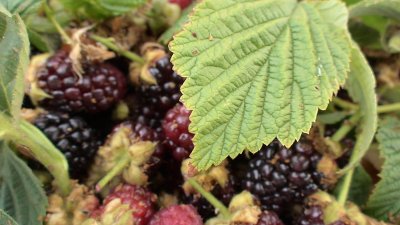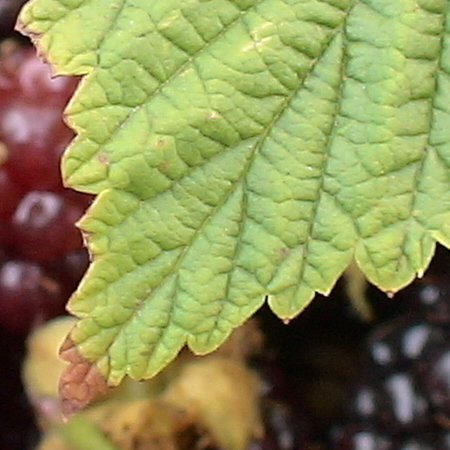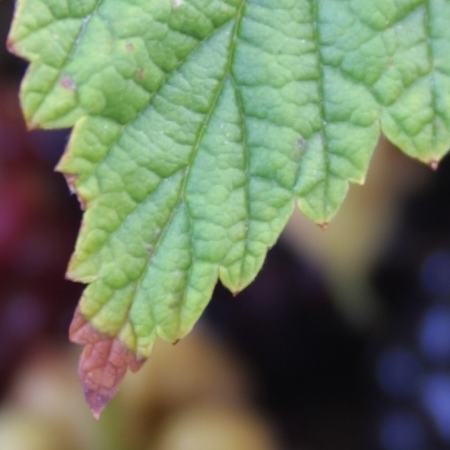3 MP Digital Camcorder Photo vs. 3 MP Digital Camera Photo
Ever since I gotten the Sony DCR-HC90 MiniDV Handycam (see "The Road to Sony DCR-HC90 MiniDV Handycam" elsewhere on this site), I've been excited about its 3 megapixel digital still picture capability. The DCR-HC90 is based on the DCR-PC330, the first digital camcorder that broke the 1 megapixel barrier. Never before has any other digital camcorder come even close to producing 3 megapixel photographs. Most digital camcorders on the market are still supporting the 640x480 (0.3 MP) resolution and few have finally ventured into the 1 MP and 2 MP territory.
Note
Since the DCR-HC90 release, Sony has produced several digital camcorders that use the same 1/3" Advanced HAD CCD sensor and support 3 megapixel still images.
Samsung's SC-D6550 Compact DuoCam is actually the first digital camcorder that broke the 3 MP barrier with its 5 MP digital still pictures. However, I don't really consider it as the digital camcorder that broke the barrier, because it is really a digital camcorder and digital camera combined in one; it's got independent lens and sensor for the two modes of operation. It's really like taking your 5 MP digital camera and taping it to your digital camcorder. Not that I don't appreciate its innovation, but this article will focus on the advancement in camcorder sensor technology, not on digital camera sensor technology, which has already broken the 12 megapixel barrier.

I have been waiting for a 3 MP digital camcorder for a long time. I have always considered two to three megapixels to be the minimum resolution you need to achieve a decent printed image. To be able to use a device with both camera and camcorder capabilities is a wonderful plus. But not if the still picture from the digital camcorder doesn't meet the quality of a digital camera. The 3 MP Sony DCR-HC90 MiniDV Handycam is placed as a direct rival to my 3 MP Canon EOS D30 professional digital SLR camera. So will the new 3MP digital camcorder CCD sensor be able to match the capability of the 3MP digital camera CMOS sensor of the past?
Tip
Sony DCR-HC90 MiniDV Handycam can shoot digital stills in 4:3 or 16:9 mode. It produces 3 MP pictures in the 4:3 mode. In the 16:9 wide-screen mode, it crops off the top and bottom of the image, producing a 2 MP photograph.
Full Disclosure
In this article, I will present two pictures for you to view. The two pictures are shot at the same time period, under the same lighting conditions. One picture is shot with the Sony DCR-HC90 MiniDV Handycam digital camcorder while the other is shot with the Canon EOS D30 digital camera and the Canon EF-S 18-55mm f/3.5-5.6 lens. (See my reviews of this SLR digital camera and lens elsewhere on this site.) I am sure that the Carl Zeiss Vario-Sonnar T* lens on the DCR-HC90 is extraordinary. The 18-55mm lens is just slightly above average. The difference in lenses could play a factor in the results. But unlikely as any mundane lens today will resolve far more detail that a 3 megapixel sensor can capture. We'll do our best to logically eliminate the lens factor in this experiment. After all, this experiment is meant to compare the sensor quality, not lens quality.
Cross-Reference
The "Canon EOS-350D / Digital Rebel XT review" listed in the Related Links section below, performed a test that indicates that the Canon EF-S 18-55mm f/3.5-5.6 lens is good enough to out-resolve the 6 MP sensor on the 300D. In fact, it alluded to that the lens can out-resolve the 8MP sensor on the 20D as well. Unfortunately, the article does not provide full-disclosure to the test, so we can only read it with a grain of salt.
The pictures presented, in the Comparison section, are actual pixel size of 450x450 crops of the pictures produced. They are presented in this article in PNG compressed loss-less format, so that you won't have to deal with lossy JPEG compression artifacts. The original pictures were produced on the Sony DCR-HC90 in JPEG (the only format supported) Fine mode and produced on the Canon D30 in its native raw format. Both were shot hand-held. The DCR-HC90 JPEG file was cropped and saved as PNG file. The Canon D30 raw file was processed into an 8-bit TIFF file, cropped, and saved as PNG.
Super SteadyShot
The DCR-HC90 SteadyShot on/off is only available in camcorder mode. In camera mode, I cannot find the SteadyShot on/off setting. Therefore, I do not know whether SteadyShot is always on or always off in camera mode. Electric SteadyShot could affect image quality in both positive and negative manners.
Color
Both pictures where shot using automatic white balance (AWB) mode. I believe it was a mistake to shoot using AWB, because AWB is inconsistent. The cameras will make up their own minds how to balance the image. I should have used daylight balance on both pictures. To get consistent white balance, always pick the white balance mode or use a white sheet of paper with custom white balance.
Anyway, for this experiment, color is insignificant. We are looking to compare image quality, not image color. If we were to compare image color, then the camera producing raw sensor file will beat the pants off the camera producing post-processed JPEG. The following three pictures illustrate this concept.

|

|

|
|
The Canon D30 and 18-55mm lens produced the first (left) vertical picture in AWB mode. The Sony DCR-HC90 produced the horizontal picture (bottom). Ignore the second (right) vertical picture for now (take a piece of paper and cover it for full effect). You can see that the DCR-HC90 produced warmer, more pleasing colors. But that is just a red herring; the Canon D30 CPU could have chosen to process that image that way as well. The next time around, AWB processors of the two cameras could reverse the image colors of the two pictures, while you have no control over their decisions.
The second (right) vertical picture shows the true power of a raw image. This picture is the result of the first (left) vertical raw image processed in daylight balance with contrast, saturation, and sharpness set to high. For this picture, color is most pleasing with these settings. With raw, post-processing is extremely flexible. Color is a moot issue in this experiment because none of the 3 MP digital camcorders can produce raw sensor files. Therefore, ignore the photo color in this image comparison.
Depth-of-Field (DOF)
Don't pay attention to the depth-of-field (how well the background is in or out of focus). The digital camcorder was set to a focal length of 5.1mm, equivalent to 37mm in full frame sensor. The digital camera was set to a focal length of 55mm, equivalent to 88mm in full frame sensor. It's obvious that the digital camcorder would have more DOF due to its wide angle, compared to the telephoto on the digital camera. The aperture was set to f/5.6 on the digital camera, while the aperture is uncontrollable manually on the digital camcorder. The aperture setting also had an effect on DOF.
Comparison
Does the digital camcorder or the digital camera produce better picture?
The answer is that it depends. Depends on your own personal preference. No one, including myself, can tell you which you would prefer. The pictures are shown below for you to make your own decision. While I can't tell you which image-capturing devices produce a "better" picture, I can state a few facts that you might consider paying attention to.
The following image is the actual pixel crop from the Sony DCR-HC90 MiniDV Handycam photograph.

The photograph produced by the Sony DCR-HC90 Handycam has three interesting characteristics. One, it looks like it has been sharpened to give its sharp, yet artificial effect. The leaf seems fake and lifeless, almost as if it is simply a texture in front of the camera lens. Two, artifacts are distinctively shown at the leaf's edge. It makes me wonder if they are JPEG compression artifacts or if they are artifacts from sensor interpolation. Three, the background blur shows noise pattern that is commonly associated with video frame.
The following image is the actual pixel crop from the Canon EOS D30 SLR digital camera photograph.

The photograph produced by the Canon EOS D30 shows a more realistic leaf with 3-dimensional feel to it. The leaf looks real. The image is slightly soft, which the D30 is known for, but can be changed through its parameter settings. The image is generated with all the parameters (sharpness, contrast, and saturation) set to default of 0. The parameters can also be changed during RAW processing. Looking at the blurred background indicate a silky smooth texture with no noise. The transition between the leaf and background is well defined. The transition between blurred surfaces is gradual and continuous.
Which picture would you pick?
Related Links
- Canon
- Canon EOS-350D / Digital Rebel XT review
- CCD Factoids
- CCD Image Sensor - Sony explains HAD
- dvspot review: Sony DCR-HC90
- Samsung SCD6550 DuoCam MiniDV Camcorder w/10x Optical Zoom & 5MP Digital Camera - Amazon User Reviews
- Sigma 105mm F/2.8 EX DG Macro Lens for Canon Digital SLR Cameras - Amazon User Reviews
- Size Matters
- Sony DCR-HC90 - Image Quality
- Sony DCR-HC90 First Impressions Camcorder Review
- Sony DCR-HC90 MiniDV Handycam Camcorder w/10x Optical Zoom - Amazon User Reviews
- Sony DCR-PC330 Camcorder Review
- Sony DCR-HC90E, Panasonic NV-GS250GC, JVC GR-DZ7 (English)
- Sony Support and Registration
- SonyStyle
- Super HAD CCD
$10000-above
$5000-$9999
$2000-$4999
$1000-$1999
$500-$999
$200-$499
$100-$199
$50-$99
$25-$49
$0-$24
Gift Certificate

